Effect of climatic variability on malaria trends in Baringo County, Kenya
- PMID: 28545590
- PMCID: PMC5445289
- DOI: 10.1186/s12936-017-1848-2
Effect of climatic variability on malaria trends in Baringo County, Kenya
Abstract
Background: Malaria transmission in arid and semi-arid regions of Kenya such as Baringo County, is seasonal and often influenced by climatic factors. Unravelling the relationship between climate variables and malaria transmission dynamics is therefore instrumental in developing effective malaria control strategies. The main aim of this study was to describe the effects of variability of rainfall, maximum temperature and vegetation indices on seasonal trends of malaria in selected health facilities within Baringo County, Kenya.
Methods: Climate variables sourced from the International Research Institute (IRI)/Lamont-Doherty Earth Observatory (LDEO) climate database and malaria cases reported in 10 health facilities spread across four ecological zones (riverine, lowland, mid-altitude and highland) between 2004 and 2014 were subjected to a time series analysis. A negative binomial regression model with lagged climate variables was used to model long-term monthly malaria cases. The seasonal Mann-Kendall trend test was then used to detect overall monotonic trends in malaria cases.
Results: Malaria cases increased significantly in the highland and midland zones over the study period. Changes in malaria prevalence corresponded to variations in rainfall and maximum temperature. Rainfall at a time lag of 2 months resulted in an increase in malaria transmission across the four zones while an increase in temperature at time lags of 0 and 1 month resulted in an increase in malaria cases in the riverine and highland zones, respectively.
Conclusion: Given the existence of a time lag between climatic variables more so rainfall and peak malaria transmission, appropriate control measures can be initiated at the onset of short and after long rains seasons.
Keywords: Baringo County; Kenya; Malaria transmission; Rainfall; Seasonal trends; Temperature.
Figures
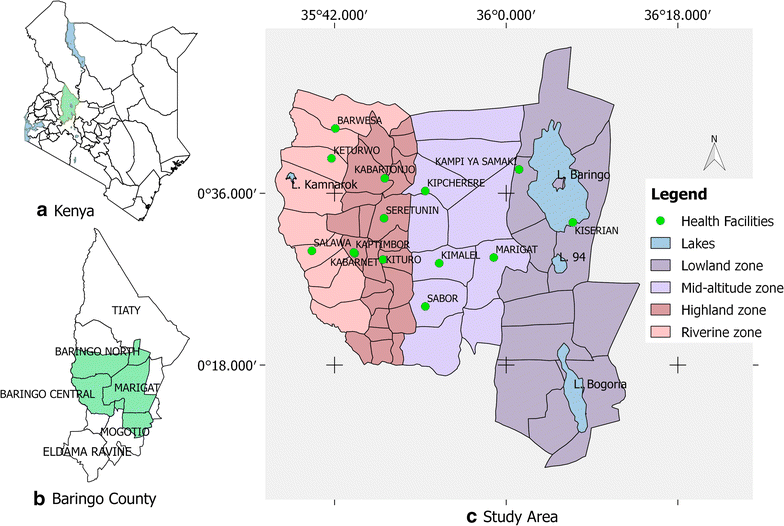

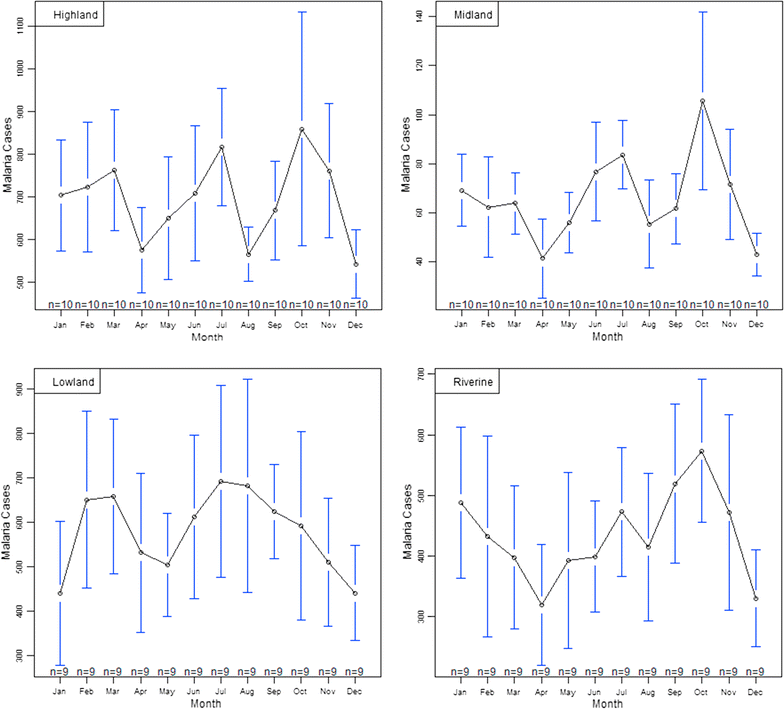
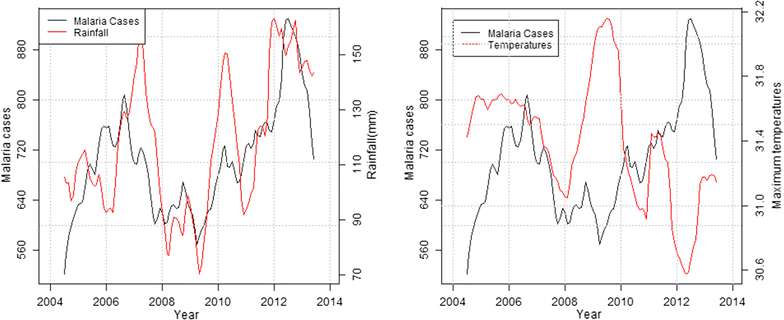
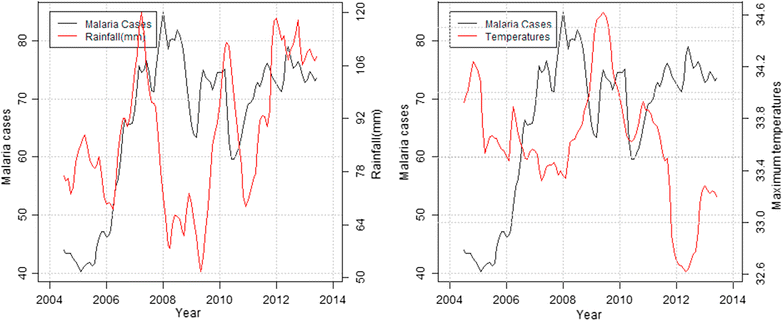

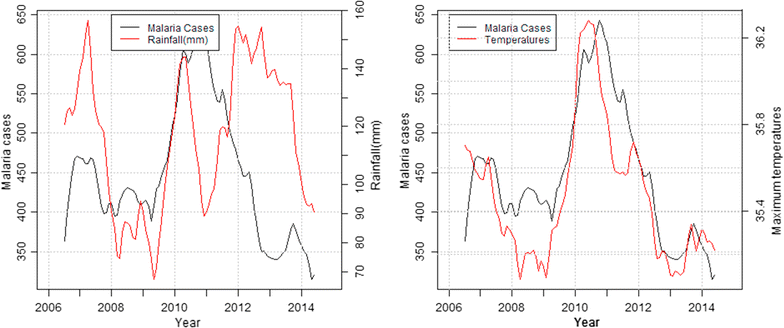
References
-
- WHO . World malaria report 2013. Geneva: World health Organization; 2013.
-
- Ministry of Health. Towards a malaria free Kenya: Kenya revised malaria strategy 2009–2018. National Malaria Control Programme; 2014.
-
- Ministry of Health . National guidelines for the diagnosis, treatment and prevention of malaria for health workers in Kenya. Kenya: Div Malar Control, MoH; 2006.
Publication types
MeSH terms
LinkOut - more resources
Full Text Sources
Other Literature Sources
Medical

